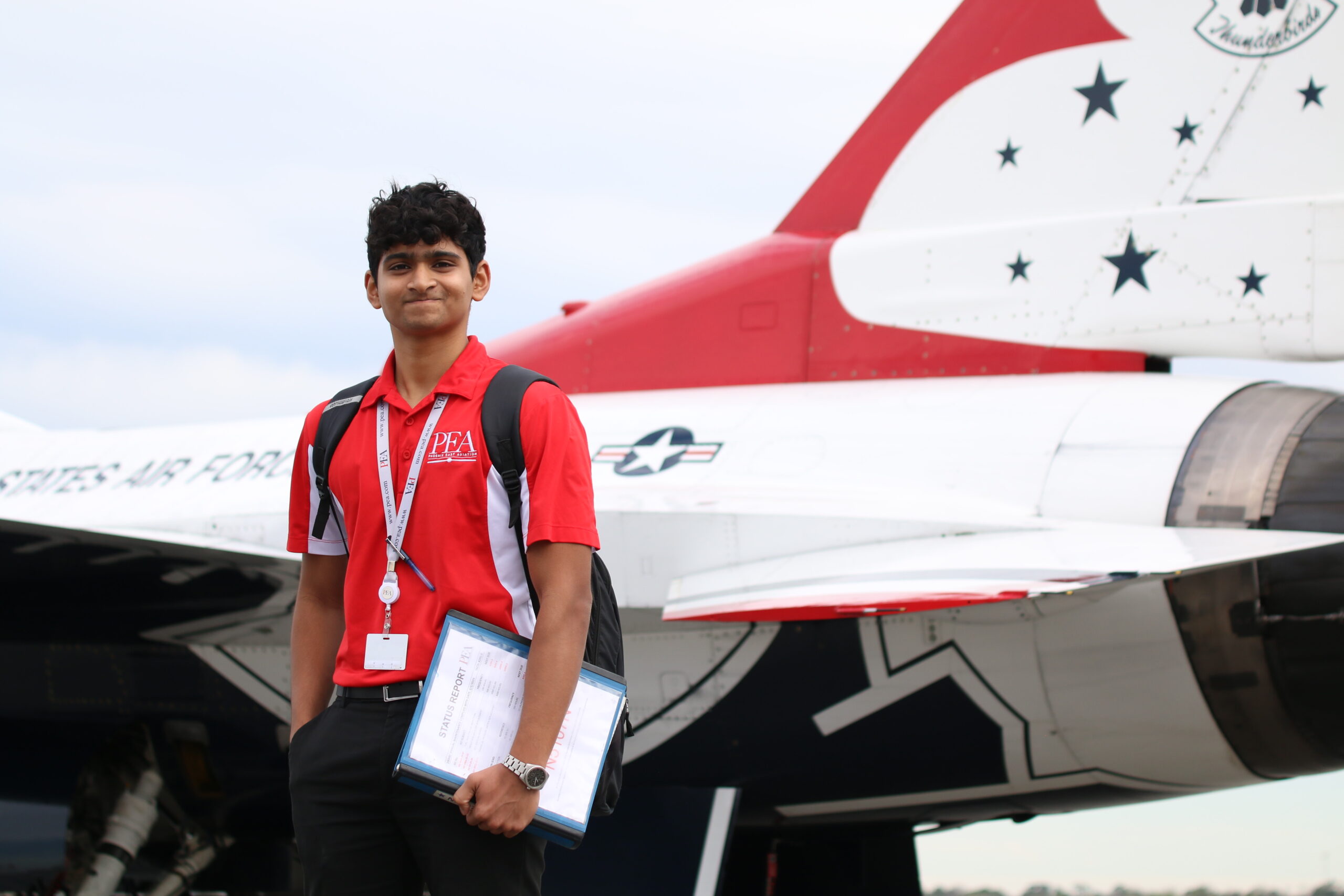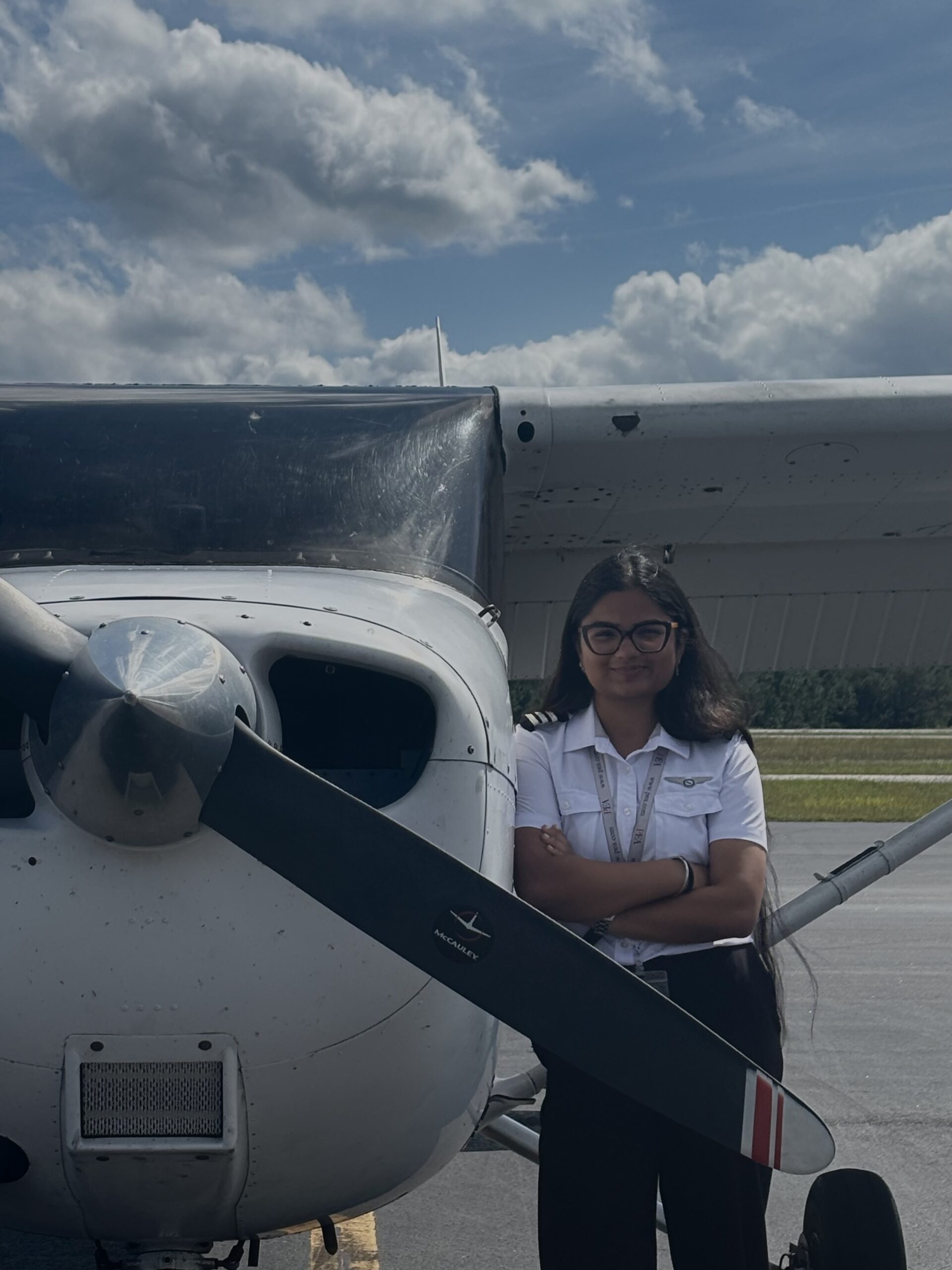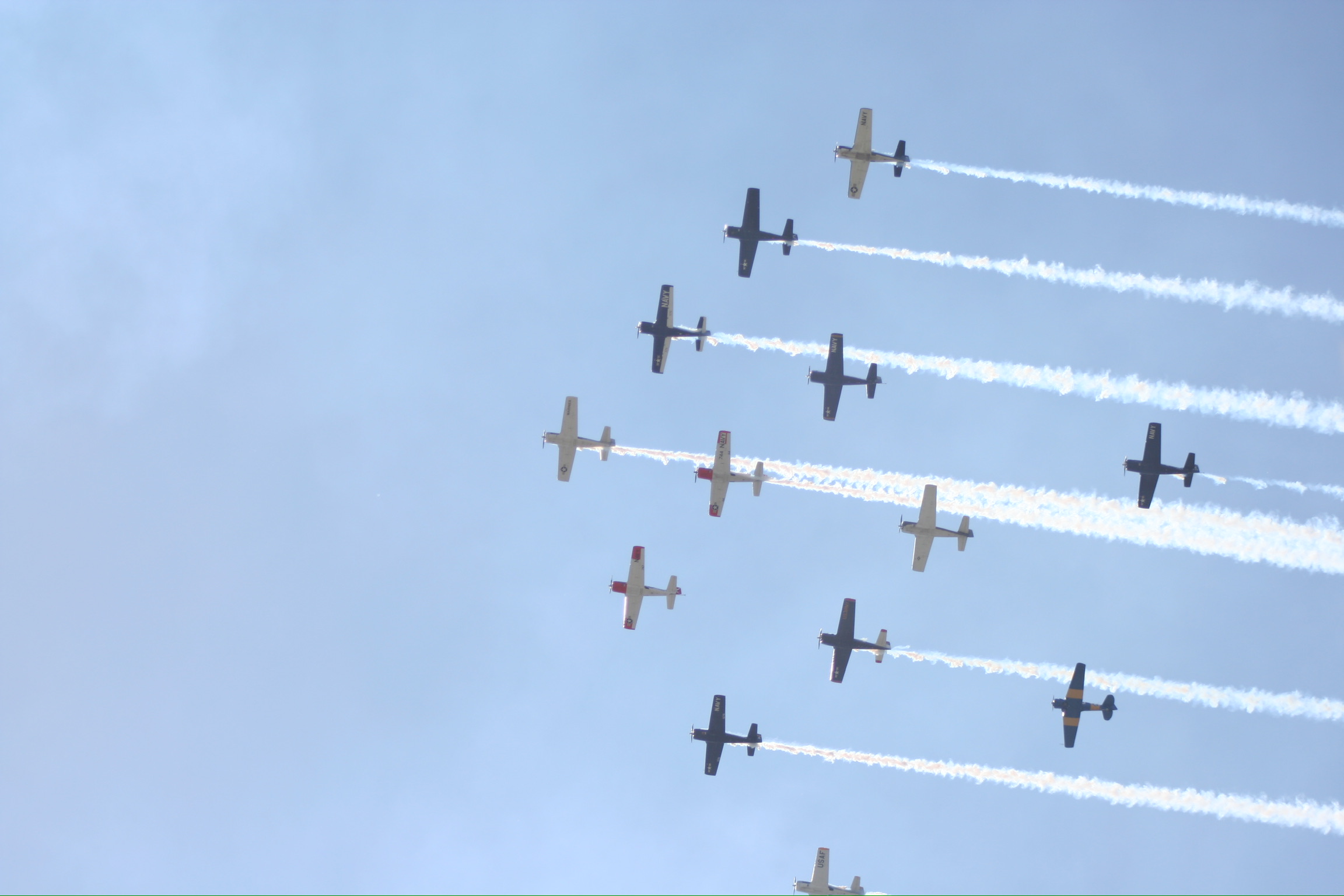Professional Pilot Training Features That All Flight Schools Should Have!
Florida is not only known as “the sunshine state”, but did you know that it is also often referred to as “the aviation state”? Phoenix East Aviation, located in Daytona Beach, has many unique features they provide its future pilots, making it a great choice for those who are looking to have their pilot dreams take off. While shopping for a flight school that best suits your end goals, these are some important items to consider that all great flight schools should have!
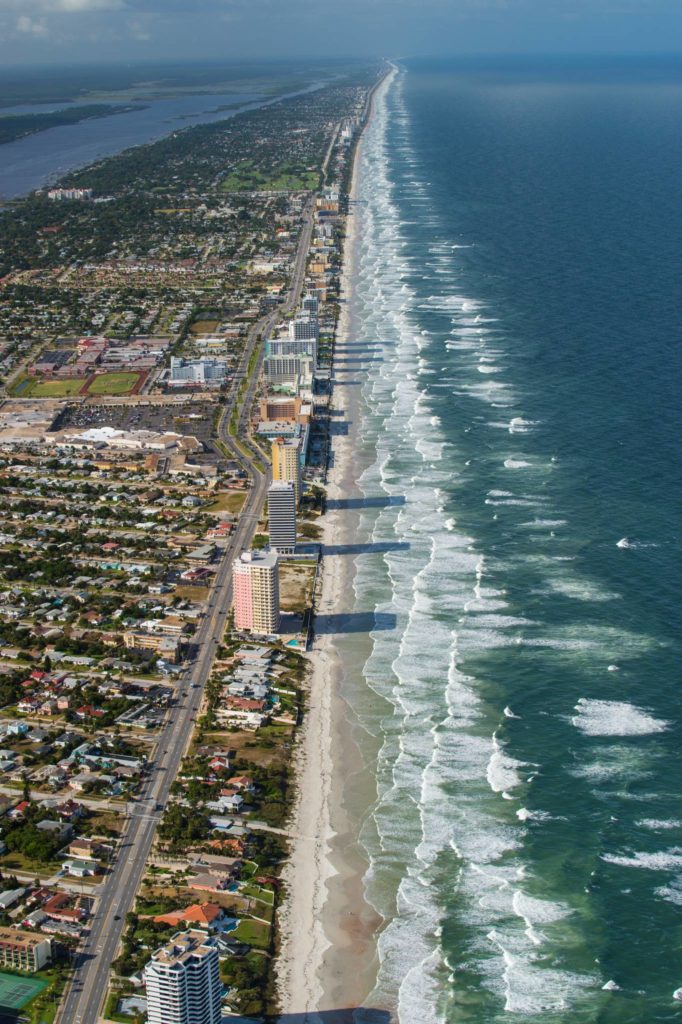
Location, Location, Location: Flying Conditions Year Round
Where a flight school is located should be heavily considered while “shopping around”. The better the weather is, the opportunity to complete flight training is higher because it cuts down on weather related delays. Phoenix East Aviation’s main campus is located in Daytona Beach, Florida, with an auxiliary training facility located about 25 miles north, at Flagler Executive Airport in Palm Coast. Aside from its technological and studious features PEA offers its students, which will be highlighted at a later point in this newsletter, their student pilots have at least 300+ days of great flying conditions. Students who train at the main campus, fly out of Daytona International Airport which is located in what is considered one of the busiest class Charlie airports. This allows for great training opportunities for the student as it facilitates a high volume of air traffic and offers a diverse range of flight experiences. This idea may seem intimidating to some, however having the ability to train in a busy airspace is a benefit that many of PEA’s alumni are grateful for. Oftentimes, when they come back to PEA to speak to students with the airlines they currently fly with , they demonstrate strong skills and knowledge while crediting the fact they had the chance to fly in and out of Daytona International Airport.
Why is Accreditation Important and What Does it Do?
The Accrediting Council for Continuing Education & Training (ACCET) provides a professional judgment as to the quality of programs and education; this is a huge honor and an important achievement for being an accredited flight school. The accreditation’s function is focused upon educational quality, the continuous assessment and improvement of educational practices, and assistance to member institutions in the improvement of these practices within their programs. Learning how to fly and become a pilot is not only a time commitment, but a financial commitment as well. When searching for a flight school, one should assess the institution’s financial trustworthiness. It is important to understand where your money will be going, considering the enormous financial investment and commitment you are making toward your aviation education. Unfortunately there are many cases where a student will invest in their future dreams of becoming an airline pilot, only to have a school shut its doors, or close down and keep their money. By being an accredited organization, the student pilot’s finances are secure, whether that student finishes their training under budget, chooses to leave, or if the school is no longer open for business. PEA has built a reputation on protecting the trust of their pilots by passing these financial evaluations every year since 1995.
PEA is an accredited flight school, with the ultimate goal of helping their pilot dreams soar. There are about 65 different countries represented at PEA, and home to both domestic and international students. PEA is only one of five flight schools in the United States who are able to offer their international students the F1 student visa.
Part 141 and Part 61 – 0 to Hero, “Reduced Minimums” CPL
Understanding the differences between the two types of Federal Aviation Administration (FAA) training regulations and different flight training programs at a flight school is important when choosing what will help an individual get to their ultimate goal. Part 141 and Part 61 are two types of FAA regulations. Part 141 curriculum is FAA approved offering students the ability to have more structure. The FAA requires flight schools to have an approved curriculum, certified instructors, lesson plans, and stage checks for students’ proficiency at each stage of their training. PEA is also one of the few schools approved by the FAA to offer a “Reduced Minimums” commercial license, and has a self-examining authority. This means that they have their own designated check airmen who provide you with the flight exam at PEA. PEA is uniquely approved by the FAA under Part 141 to complete the Initial Commercial Pilot License in 50 hours, compared to other FAA Part 141 Flight Schools requirements of 120 hours. They have proved to the FAA they train at a high level of proficiency where they are able to provide their students with this unique opportunity. This helps cut down on both training timeline and cost! Whereas Part 61 allows for more flexibility in scheduling and is designed mainly for individuals who may have other commitments that limit their availability in full-time flight training, however there is a 250 hour requirement for the commercial pilot license. Students can move at their own pace and focus on the specific type of flying they want to do.
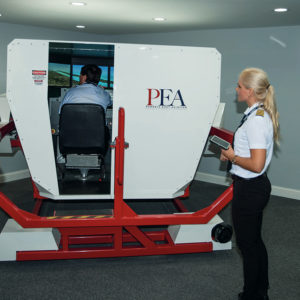 Technological Advancements of Flight Training
Technological Advancements of Flight Training
It is an integral part of flight training to not only learn how to fly an airplane, but also how to become a successful pilot. This is done in a multitude of ways, but most importantly with the help of the technological features and additional resources available for students. By incorporating a FMX Full Motion Simulator, a motion platform, in flight training, the “realness” student pilots experience better equip them for the real-world of being a pilot flying an actual aircraft. The availability of this technological resource helps their pilots learn primary flight skills in a device that provides accurate feedback, making it an easier transition into a real aircraft because they know what it “feels like” to fly. PEA is equipped with a Redbird FMX Full Motion simulator as well as Red TD2 Simulators available to students at both the main campus in Daytona Beach, as well as their auxiliary training facility. Flight training begins before taking on the skies. In fact, about 80% of training takes place on the ground and theory. After the skills and knowledge is learned, then practice is done in a cost efficient technological setting, like a simulator, to perfect procedures behind the glass cockpit. The goal is to have students understand the material, practice its procedures, and then be able to perform them within the aircraft. It is a constant balance of theory on the ground, while flying in the skies.
Considering the Fleet Size of a Flight School
There are many items that should be considered when choosing a flight school to attend, to ensure you receive the best training possible. The fleet size of a flight school is important to consider because having enough resources available to their students, reduces scheduling conflicts and/or training delays. The size of PEA’s fleet, which consists of 65 plus aircraft, is another focal point of their flight training facility. Their single engine Cessna 172s and multi engine Diamond DA42s are both equipped with Garmin G1000 glass flight decks, so students are ready for the airlines at the end of their training. They also provide multi engine training in Piper Senecas, and have a Super Decathlon, an aerobatic aircraft that many students utilize to receive their Upset Prevention and Recovery Training. PEA also takes pride in its in-house maintenance department that provides high-quality maintenance capabilities and valuable knowledge, which is a true asset to the school’s ability to continue successfully training pilots for over 50 years.
Free Tutoring Program & On Campus Airline Visits
Flight training is a financial investment and while everyone may share the same end goal of becoming a pilot, everyone’s path to get there may look different. While shopping for a flight school, take a closer look at how the staff, instructors, and fellow students strive to ensure you become the most successful pilot. This is what PEA strives for in its students, and not only teaches them how to fly a plane, but also how to become a successful pilot. Flight training can be challenging at times, but there is a built in support system at PEA. An additional resource PEA offers its students is their free tutoring program that serves as a valuable and supplemental resource for many students, who utilize it if they find themselves struggling in any aspect of their training. The tutoring program PEA provides is run by fellow students who are working on obtaining their Instructor Ratings. This allows the student who is receiving the tutoring gain reassurance, and leaves confident knowing they were assisted by someone who has once been where they are in their training. It is important for PEA that their students feel comfortable, confident, and ready to take on the skies! While the free tutoring program at PEA is a great benefit, they also host airline visits, which is also free to all students and is beneficial for them. Students have the opportunity to network with pilot recruiters, pilots, and even alumni, establishing a working relationship that will help them in the long run after the completion of their training.
Safety is a Priority
The safety of a flight training facility should be heavily considered while looking for a flight school. It is imperative to understand that safety should be a priority both on the ground and in the skies. The Aviation Safety Action Program (ASAP) is in place to enhance aviation safety through the prevention of accidents and incidents, with its focus of encouraging voluntary reporting for safety issues and events. PEA continues to demonstrate a safe environment and is one of the few flight schools that are approved to be a part of the ASAP program, which is reserved for the airlines.
Are You Ready for Your Pilot Dreams to Take Off?
Our esteemed Admissions Department recommends that when looking for a flight school, to compare each one closely to ultimately choose the best for your ultimate goals. This newsletter exemplifies only some of the features Phoenix East Aviation offers. If you are interested in learning more about their flight training, or would like to schedule a tour of the newly remodeled facility, email info2@pea.com to get in touch with us!


